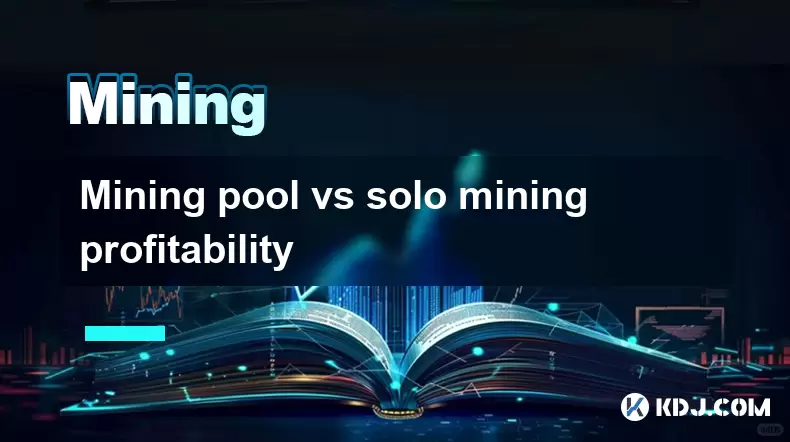-
 Bitcoin
Bitcoin $117,879.8627
0.05% -
 Ethereum
Ethereum $2,956.4450
-0.23% -
 XRP
XRP $2.7737
-0.58% -
 Tether USDt
Tether USDt $1.0003
-0.01% -
 BNB
BNB $687.3817
-0.92% -
 Solana
Solana $161.9370
-0.65% -
 USDC
USDC $1.0000
0.00% -
 Dogecoin
Dogecoin $0.1983
-2.35% -
 TRON
TRON $0.3019
-1.02% -
 Cardano
Cardano $0.7217
-0.53% -
 Hyperliquid
Hyperliquid $47.5630
3.05% -
 Stellar
Stellar $0.4341
11.02% -
 Sui
Sui $3.4115
-0.11% -
 Chainlink
Chainlink $15.1548
-0.82% -
 Bitcoin Cash
Bitcoin Cash $505.9817
-4.61% -
 Avalanche
Avalanche $21.0131
1.73% -
 Hedera
Hedera $0.2033
2.29% -
 UNUS SED LEO
UNUS SED LEO $9.0775
-0.06% -
 Shiba Inu
Shiba Inu $0.0...01315
-1.08% -
 Toncoin
Toncoin $3.0032
0.48% -
 Litecoin
Litecoin $93.1712
-1.23% -
 Polkadot
Polkadot $3.9194
-0.78% -
 Monero
Monero $334.1138
0.50% -
 Dai
Dai $1.0000
-0.01% -
 Ethena USDe
Ethena USDe $1.0005
-0.04% -
 Uniswap
Uniswap $8.4642
-3.24% -
 Pepe
Pepe $0.0...01231
-0.36% -
 Bitget Token
Bitget Token $4.3823
-1.34% -
 Aave
Aave $302.1026
0.83% -
 Bittensor
Bittensor $386.2829
-2.26%
Mining pool vs solo mining profitability
Joining a mining pool offers more consistent rewards through shared hash power, while solo mining provides higher individual payouts but requires significant resources and carries greater risk.
Jul 12, 2025 at 09:21 am

Understanding Mining Pool and Solo Mining
In the world of cryptocurrency mining, miners have two primary options: joining a mining pool or engaging in solo mining. Each method comes with its own set of advantages and drawbacks, especially when it comes to profitability. Understanding the differences between these two methods is crucial for anyone looking to mine cryptocurrencies like Bitcoin, Ethereum, or Litecoin.
A mining pool is a group of miners who combine their computational resources to increase the chances of finding a block. When a block is found, the reward is distributed among the participants based on their contributed hash power. In contrast, solo mining involves a single miner attempting to solve blocks independently without sharing resources or rewards.
Profitability Factors in Mining Pools
When evaluating the profitability of mining pools, several factors come into play. The first is the pool fee, which is typically a percentage of the block reward taken by the pool operator as compensation for maintaining the infrastructure. While this reduces individual earnings slightly, it also increases the likelihood of consistent payouts.
Another important factor is the hash rate contribution. Miners with higher hash rates contribute more to the pool's overall performance and thus receive a larger share of the rewards. Additionally, the payout structure used by the pool—such as Pay Per Share (PPS), Proportional, or Score-based—can significantly affect how much and how often a miner gets paid.
The block discovery frequency also plays a role. Since pools are more likely to find blocks regularly due to combined computing power, miners can expect more predictable income compared to solo mining, where rewards may be sporadic but potentially larger.
Profitability Considerations in Solo Mining
Solo mining offers the potential for higher individual rewards since there are no fees or shared payouts. However, this method requires substantial computational power to compete with large mining pools. Without sufficient hash rate, solo miners might go weeks or even months without earning any reward.
One major drawback of solo mining is the inconsistent income. A miner could invest heavily in hardware and electricity costs only to face long periods without returns. This makes solo mining riskier, especially for individuals with limited resources.
On the other hand, successful solo miners who manage to find a block receive the entire block reward, including transaction fees. This can make solo mining highly profitable under the right conditions, particularly when mining less popular or newer cryptocurrencies with lower network difficulty.
Comparing Costs and Returns
Both mining pools and solo mining involve initial and ongoing costs, such as hardware investment, electricity consumption, cooling systems, and maintenance. These expenses must be carefully calculated against expected returns to determine true profitability.
In mining pools, the steady but smaller payouts help offset operational costs more consistently. For example, a miner contributing 1% of a pool’s total hash rate will earn approximately 1% of every block reward. Over time, this can result in steady returns that help cover daily expenses.
In solo mining, the financial break-even point is much harder to predict. Due to the low probability of discovering a block independently, miners need to consider long-term averages and ensure they can sustain operations during dry periods. High electricity costs can quickly erode profits if blocks aren’t found frequently enough.
Additionally, network difficulty adjustments impact both methods. As more miners join the network, difficulty increases, making it harder to find blocks. Mining pools adjust better to this because of their collective hash power, while solo miners face steeper challenges.
Choosing Based on Hash Rate and Resources
The decision between mining pool and solo mining should largely depend on a miner’s hash rate capacity and available resources. Those with low to moderate hash rates are generally better off joining a pool to maximize consistent returns.
Miners with access to industrial-grade ASIC rigs, cheap electricity, and adequate cooling facilities may explore solo mining for potentially higher payouts. However, this approach is best suited for those who can afford the financial risk of irregular income.
It's also worth considering the type of cryptocurrency being mined. Some altcoins have lower network difficulty, making them more viable for solo mining. Others, like Bitcoin, require immense hash power to be competitive without a pool.
- Ensure your mining software is compatible with solo or pool configurations
- Monitor network difficulty trends before committing to a strategy
- Compare historical payout data from various pools if choosing a pool
- Calculate average earnings per day/month based on current hash rate
Frequently Asked Questions
Q: Is solo mining still profitable in 2024?
Solo mining can be profitable under specific conditions, such as mining cryptocurrencies with low network difficulty or having access to high-performance hardware and low-cost electricity. It is not recommended for beginners due to the inconsistent income and high initial investment.
Q: Do mining pools guarantee daily earnings?
Mining pools do not guarantee daily earnings, but they significantly increase the likelihood of receiving regular payouts. Earnings depend on the pool’s success in finding blocks and the individual miner’s hash rate contribution.
Q: Can I switch between solo mining and pool mining?
Yes, miners can switch between solo and pool mining at any time. However, changing strategies may require reconfiguring mining software and adjusting expectations regarding payout frequency and amount.
Q: Are mining pool fees worth paying?
For most miners, especially those with mid-range or lower hash rates, mining pool fees are justified by the increased chances of earning consistent rewards. The small deduction in each payout is often offset by the stability it provides.
Disclaimer:info@kdj.com
The information provided is not trading advice. kdj.com does not assume any responsibility for any investments made based on the information provided in this article. Cryptocurrencies are highly volatile and it is highly recommended that you invest with caution after thorough research!
If you believe that the content used on this website infringes your copyright, please contact us immediately (info@kdj.com) and we will delete it promptly.
- Bitcoin Rally, Satoshi Nakamoto, and the Richest Elite: A New World Order?
- 2025-07-13 12:30:12
- Mining, BDAG, LTC Outlook: What's Hot and What's Not?
- 2025-07-13 12:30:12
- Web3 Gaming: Explosive Growth Forecast to 2032 – But Can It Overcome the Hurdles?
- 2025-07-13 12:50:11
- XRP Price, Wallet Growth, and Whale Bets: Decoding the Momentum
- 2025-07-13 12:50:11
- Arctic Pablo Coin: Is This Presale the Next High ROI Meme Coin?
- 2025-07-13 12:55:12
- Bitcoin Price, Leveraged Futures, and Traders Increase: A NY Perspective
- 2025-07-13 12:55:12
Related knowledge

How to keep a mining rig cool
Jul 12,2025 at 01:42pm
Understanding the Importance of Cooling in Mining RigsCryptocurrency mining is an intensive process that places heavy demand on hardware components, p...

How much does it cost to start crypto mining?
Jul 13,2025 at 12:22am
Understanding the Basic Costs of Crypto MiningStarting crypto mining involves several upfront and ongoing expenses. The primary costs include hardware...

What is the most profitable crypto to mine?
Jul 13,2025 at 07:00am
Understanding Mining Profitability in CryptocurrencyWhen evaluating the most profitable crypto to mine, it's essential to consider several factors tha...

What do I need to start mining crypto?
Jul 13,2025 at 12:28am
Understanding the Basics of Crypto MiningCrypto mining is the process by which transactions are verified and added to a blockchain, and new coins are ...

How does crypto mining work?
Jul 13,2025 at 11:01am
Understanding the Basics of Crypto MiningCrypto mining is the process through which new cryptocurrency coins are introduced into circulation and trans...

How to find the best Dogecoin mining pool for me
Jul 12,2025 at 04:14pm
Understanding the Role of a Mining PoolWhen mining Dogecoin, joining a mining pool can significantly increase your chances of earning consistent rewar...

How to keep a mining rig cool
Jul 12,2025 at 01:42pm
Understanding the Importance of Cooling in Mining RigsCryptocurrency mining is an intensive process that places heavy demand on hardware components, p...

How much does it cost to start crypto mining?
Jul 13,2025 at 12:22am
Understanding the Basic Costs of Crypto MiningStarting crypto mining involves several upfront and ongoing expenses. The primary costs include hardware...

What is the most profitable crypto to mine?
Jul 13,2025 at 07:00am
Understanding Mining Profitability in CryptocurrencyWhen evaluating the most profitable crypto to mine, it's essential to consider several factors tha...

What do I need to start mining crypto?
Jul 13,2025 at 12:28am
Understanding the Basics of Crypto MiningCrypto mining is the process by which transactions are verified and added to a blockchain, and new coins are ...

How does crypto mining work?
Jul 13,2025 at 11:01am
Understanding the Basics of Crypto MiningCrypto mining is the process through which new cryptocurrency coins are introduced into circulation and trans...

How to find the best Dogecoin mining pool for me
Jul 12,2025 at 04:14pm
Understanding the Role of a Mining PoolWhen mining Dogecoin, joining a mining pool can significantly increase your chances of earning consistent rewar...
See all articles

























































































